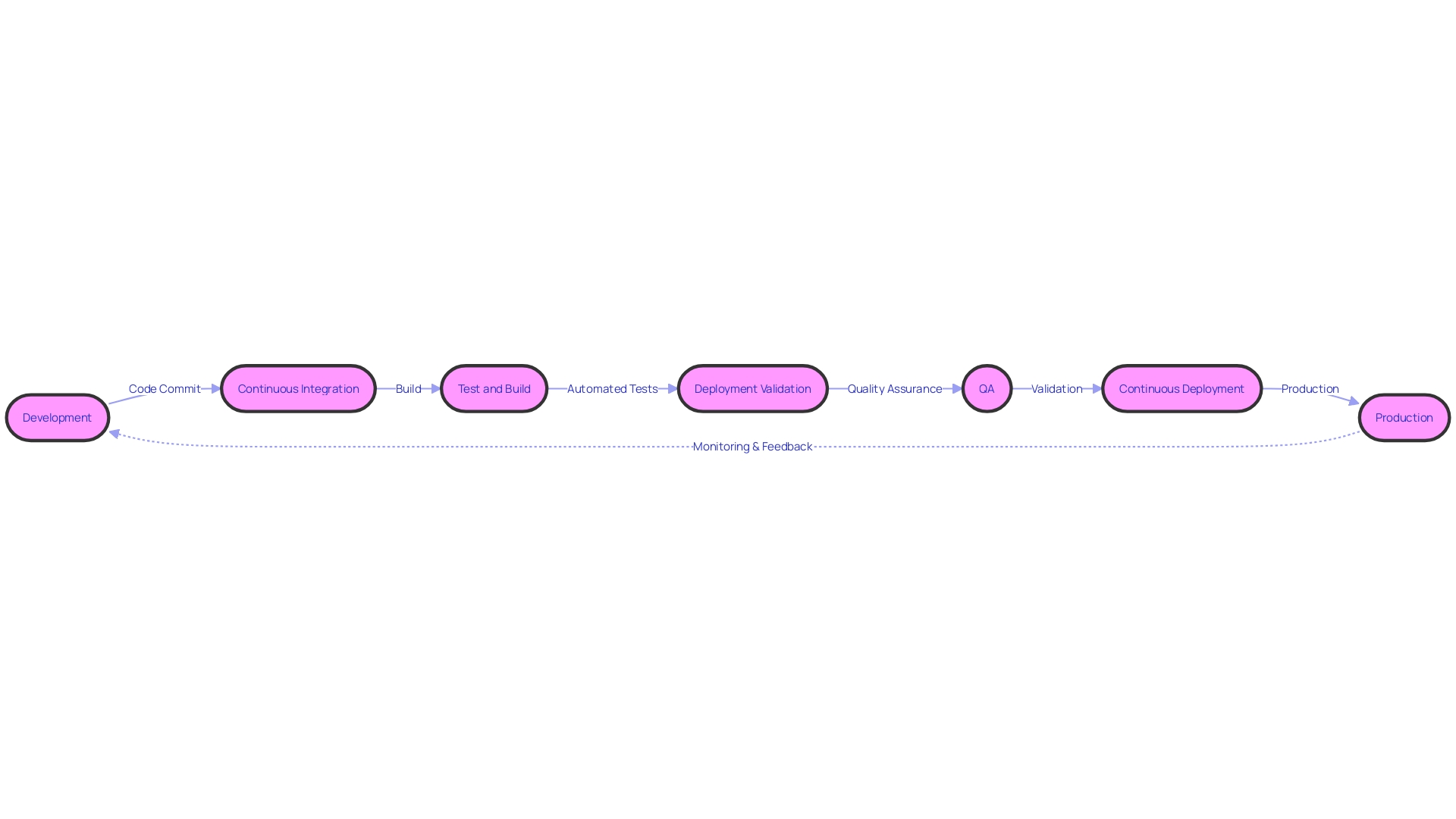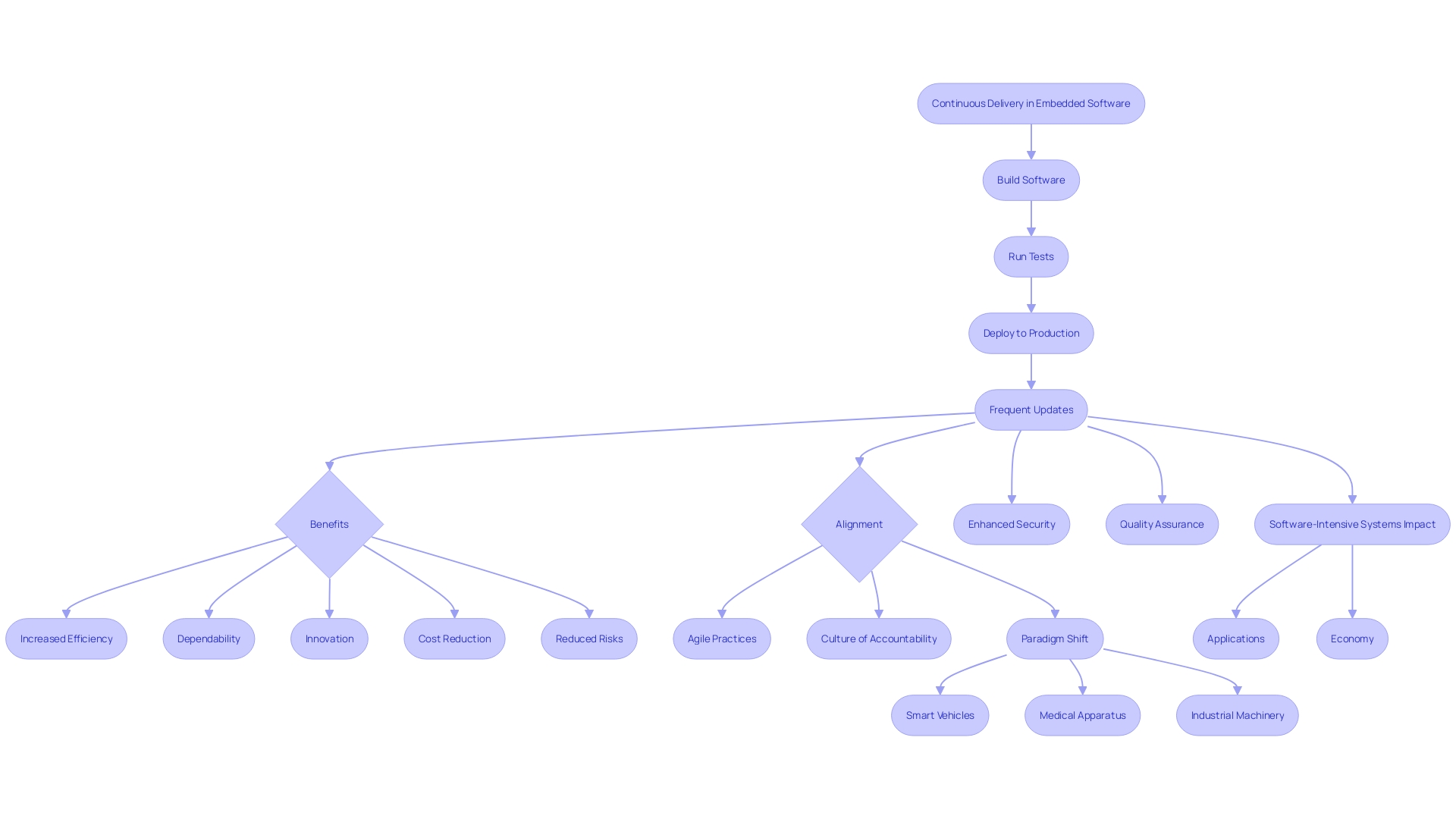Introduction
Embedded software engineering is a field at the forefront of innovation, driving technological advancements across industries. To maintain a competitive edge, companies in this industry are adopting continuous delivery (CD) methods, which involve regular software enhancements and a more agile approach.
This article explores the need for innovation in embedded software engineering, the challenges and opportunities in this field, innovative solutions for embedded software engineering services, and the benefits and results of embracing these innovative practices. Get ready to delve into the world of embedded software engineering and discover how it is shaping the future of technology.
The Need for Innovation in Embedded Software Engineering
Embedded software engineering is in the vanguard of technological advancement, propelling industries with continuous innovation. To maintain a competitive edge, embedded software companies are embracing the art of continuous delivery (CD).
This systemic approach pushes the boundaries by regularly constructing, testing, and delivering software enhancements, fostering a more agile, quality-centric, and expedient deployment rhythm. Teams are now ensuring that even complex embedded systems, integral to smarter vehicles, more sophisticated medical devices, and enhanced industrial machinery, can adjust to rapid market shifts.
The agile nature of CD lies not only within its automation capabilities but also in the proactive, cooperative culture it cultivates. It's a culture that values mutual accountability for a product’s integrity, from conception to operation.
Moreover, this approach trims costs, minimizes risks, and accelerates time-to-market, reflecting industrial protocols akin to car manufacturing—where extensive planning, experimentation, and validation are prerequisites for scaling up production. As the intricate weave of software and hardware intensifies, traditional development strategies no longer suffice; they yield to agile methodologies that converge iterative development with frequent, reliable testing and deployment cycles. The transition to CD is punctuated by a paradigm shift in organizational culture and offers a myriad of opportunities for growth, particularly for software startups wrestling with resource constraints. These startups often blaze trails, crafting pioneering software-intensive products while navigating the pressing demands of innovation. Recognizable as an economic dynamo, it's vital for software startups to employ a broad array of strategies, as advised by the ISO 42010:2011 standard, to ensure the software plays a cardinal role in development and operational evolution, thereby confirming its indispensable value to the market.

Case Study: Challenges and Opportunities in Embedded Software Engineering
Embedded software engineering, a domain characterized by the intricate dance between hardware and software, presents a series of complex challenges, coupled with the promise of significant breakthroughs. One such challenge is the need for precise understanding of hardware-software co-design—an interplay that is unique to every system, marrying the capabilities of hardware with the functionalities of software.
Navigating this terrain requires flexibility and receptivity to emerging technologies and techniques, such as the integration of AI within embedded systems, an endeavor that is only now starting to be fully appreciated. Particularly noteworthy is the advent of Embedded Edge Computing, a cutting-edge technology positioned to revolutionize embedded AI by bringing computational power closer to the source of data.
Recognizing and addressing real-world problems is critical for innovators in this field, steering clear of the pitfall of developing technology in search of an application. A case in point is the work of Arpan Pal, Chief Scientist and Research Area Head at TCS Research.
His contributions to Intelligent Sensing, Signal Processing & AI, and Edge Computing over three decades exemplify the pinnacle of embedded systems innovation. His career is marked by the ability to strike a delicate balance between conceptual innovation and tangible applications, advising newcomers to the field to focus on solving practical problems through technology rather than the other way around. While this field continues to grow and adapt, experts emphasize the importance of a holistic approach to measurement in software engineering, underscoring the multidimensional nature of this science. Indeed, as the research community refines its quantitative methodologies, it becomes increasingly critical to focus on developing mature measures that can map onto the unique phenomena encountered in embedded systems. Understanding these scientific principles provides valuable context for stakeholders in the embedded software industry, directing future innovation in a way that is both measured and impactful.
Innovative Solutions for Embedded Software Engineering Services
Embracing the continuous delivery (CD) approach in embedded software engineering catalyzes unprecedented levels of efficiency, dependability, and innovation. This method dramatically elevates the development trajectory by facilitating the rapid construction, testing, and deployment of software enhancements with unparalleled frequency. The essence of CD lies in its capabilities to notably diminish the costs and risks associated with deploying updates, engendering a seamless, routine deployment process capable of execution on demand across an array of systems, from sprawling server farms to intricate embedded systems.
Through the integration of CD, organizations realize a mindset transformation and establish a culture predicated upon collective accountability for the software’s dependability encompassing developers to operators. For software omnipresent in the infrastructure of smart vehicles, medical apparatus, and advanced industrial machinery, CD represents a paradigm shift from traditional segregated hardware and software development streams. It aligns with agile practices for a synchronized and expedited developmental cycle, ensuring the software's release readiness at any given moment.
The meticulous orchestration of software deployment aligns with the rich narratives of manufacturing innovation, with generational wisdom underscoring the criticality of thorough planning and implementation - analogous to the meticulous line updates in auto factories. Modern software construction and cybersecurity experts acknowledge the defects in current software deployment; with bloated applications and excessive dependencies, the demands for enhanced software security and quality become clear. A testament to its transformative impact, statistics illustrate that software-intensive systems are central to the functionality of a wide spectrum of applications.
According to ISO 42010:2011, these systems greatly influence the full lifecycle of design to evolution, leading to contributions that go beyond typical software parameters. The incursion of software startups has propelled this growth further, as these entities are recognized for their inventive software-intensive products, developed in time-restricted environments with finite resources. This has spurred substantial research and opportunity for multi-disciplinary innovation, with software startups contributing significantly to economic growth through job creation and pioneering advancements.

Benefits and Results of Innovative Embedded Software Engineering Services
Harnessing unique digital technologies has become indispensable across industries such as manufacturing, healthcare, and even more asset-intensive sectors like chemicals and transportation. Digitalization, empowered by the swift progression of artificial intelligence (AI), is revolutionizing plant operations, product design, and asset management, making it a cornerstone of modern business.
At the core of this transformation is the innovation in embedded software engineering, which not only expedites time-to-market but also uplifts product quality, delivering potent competitive advantages. AI's ascension as a practical, cost-effective solution manages heavy datasets integral to effective digitalization of connected ecosystems.
Additionally, the proliferation of cloud platforms and advanced computing capabilities lowers the financial threshold for adoption, democratizing access to powerful data analytics and AI model training with open-source resources. Furthermore, as one tenet of software development suggests, a developer must have a comprehensive understanding of all program requirements, emphasizing the criticality of detailed knowledge in crafting impactful software solutions.
This precision of purpose is a catalyst for improved efficiency and performance. The practical impact of these advancements is undeniable. Case studies reveal considerable strides in sectors ranging from government programs to private enterprises, prompting them to leverage technology to streamline services and bolster public trust. This shift is quintessential for adapting to a rapidly evolving digital landscape, where innovation in software engineering is not only a value addition but also a source of quantifiable cost savings and enhanced return on investment.
Conclusion
In conclusion, embedded software engineering is a rapidly evolving field that demands continuous innovation and the adoption of continuous delivery (CD) methods. CD brings about agility, quality-centricity, and faster deployment, enabling companies to maintain a competitive edge.
Challenges and opportunities arise from the intricate dance between hardware and software, requiring a holistic approach that encompasses hardware-software co-design and the integration of emerging technologies like AI and Embedded Edge Computing. Embracing CD in embedded software engineering results in unprecedented efficiency, dependability, and innovation.
By reducing costs and risks, CD facilitates routine deployment across systems, aligning with agile practices for synchronized and expedited development. It transforms software-intensive systems and paves the way for software startups to contribute to economic growth through pioneering advancements.
Innovative solutions for embedded software engineering services through CD bring benefits across industries. Digitalization, powered by AI and advanced computing, expedites time-to-market, uplifts product quality, and delivers competitive advantages.
Precision of purpose and comprehensive understanding of program requirements drive improved efficiency. Case studies showcase cost savings, enhanced ROI, and improved services. To succeed, companies must embrace innovation, stay agile, and leverage new methodologies. The integration of CD, understanding of hardware-software co-design, and adoption of emerging technologies shape the future of technology. By staying at the forefront, companies drive advancements, maintain a competitive edge, and reap the rewards of continuous improvement in embedded software engineering.





